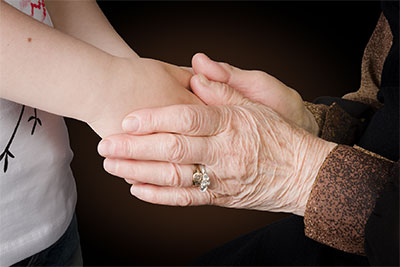A senior population that is the fastest growing sector in the U.S. has created a booming home health industry, one that is expected to reach a value of $150.8 billion by 2018. That rapid growth has also given rise to another highly lucrative industry: reimbursement fraud.
 Since 2000, the senior population has increased by 15.1% versus 9.7% for the population as a whole. However it’s not just the size of the population that has created a surge in home health services. It is also the growing emphasis on “aging in place.” With the support of services like remote monitoring and telemedicine, higher acuity patients are remaining safely in their homes longer than ever before.
Since 2000, the senior population has increased by 15.1% versus 9.7% for the population as a whole. However it’s not just the size of the population that has created a surge in home health services. It is also the growing emphasis on “aging in place.” With the support of services like remote monitoring and telemedicine, higher acuity patients are remaining safely in their homes longer than ever before.
These trends led to Medicare reimbursements for home-based care totaling $18.4 billion in 2011 and state Medicaid program reimbursements of $12.7 billion for beneficiaries' personal-care services. Those figures have proven to be impossible for fraudulent players to resist, resulting in the fleecing of Medicare, Medicaid and private insurance companies for billions of dollars for in-home services that were never provided—and endangering the lives of patients who rely upon home healthcare to survive.
A Billion-Dollar Problem
According to the Centers for Medicare & Medicaid Services (CMS), approximately 12 million individuals receive in-home care, much of which is provided by more than 11,600 Medicare-certified home health agencies.
Rapid industry growth has exacerbated the billion-dollar fraud problem. In February 2014 alone, the FBI arrested more than 20 people following a multi-year investigation into fraudulent home health billing practices in the District of Columbia, including the owner of three agencies who is accused of fraudulently collecting more than $75 million through the D.C. and Maryland Medicaid programs. In Dallas, federal indictments were handed down against hundreds accused of profiting from more than $500 million in fraudulent Medicare billings.
One of the most common and lucrative forms of fraud is submission of claims for payment on services that were never provided. The ease with which providers can “game” the system has made it a particularly vexing problem. For years, manual verification processes made it easy to falsify records pertaining to the presence of a home health aide or homecare nurse at a patient’s home.
To stem the tide of fraudulent claims, a number of states have passed legislation requiring home healthcare agencies to implement electronic visitor verification (EVV) to prove that a home health aide or nurse was physically present in the patient’s home for the required length of time.
Attempting to Comply
The most popular form of compliance has been implementation of telephony-based EVV, which entails the homecare provider using the patient’s landline to call a designated number to start the encounter of care. A return call to the same number marks the end of the encounter.
This approach is not without significant challenges. While this was an effective method just five years ago, consumers are rapidly dropping landlines in favor of cell phones and Voice-over IP lines. In fact, according to a recent Wall Street Journal report, nearly 40% of U.S. homes do not have a landline. As a result, providers must find other solutions.
Location-based technology has proven somewhat effective in certain situations. GPS-enabled EVV solutions, for example, utilize GPS embedded in cellular phones to calculate and display the homecare provider’s location and time. It is fairly tamper-proof, although there are certain situations in which GPS EVV falls short. For example, when a patient lives in a large apartment complex or multi-family residence, GPS solutions cannot prove that the caregiver was physically present inside the patient’s room or apartment and not sitting outside the building or a nearby coffee shop. GPS signals are also often lost within a building.
Proof of Presence
To close these authentication gaps, home health agencies can now take advantage of advances in proximity technologies like Near Field Communication (NFC) or Bluetooth Smart (BLE) to deploy highly secure EVV systems that are both easy to use and impossible to manipulate or defraud. They work with any NFC or BLE enabled smartphone or tablet to provide true “proof of presence” without requiring users to modify their device or download apps.
Proof of presence is the concept of knowing that a person or device is performing a unique interaction with an object and not able to replay or replicate that interaction without the object physically present. If, for example, an NFC tag is secured to a physical location, it can prove the presence of the person at the location via the verification of a unique interaction.
In the case of home healthcare, tamper-proof NFC tags are attached to or embedded into an object inside the patient’s home in such a way that they cannot surreptitiously be removed or altered. When the caregiver arrives, they simply “tap” the object with their NFC-enabled device to communicate secure information to a cloud-based authentication platform. Tag data has security and privacy attributes that change on every tap, thereby providing an indisputable and auditable EVV record for home health agencies to use for billing and reimbursement.
Top NFC tag solutions will integrate seamlessly into most agencies’ clinical and administrative management software systems. This allows data collected at the point of care to be transmitted back to the agency in real-time for improved care coordination, faster and more accurate claims processing and advanced analytics.
NFC tags bring the concept of proof of presence to life by facilitating EVV in home healthcare. In doing so, they have the potential to save billions in fraudulent claims while ensuring the health and welfare of every patient in need of in-home care.